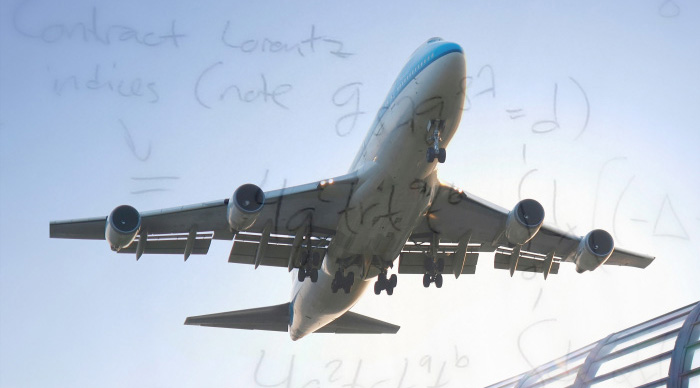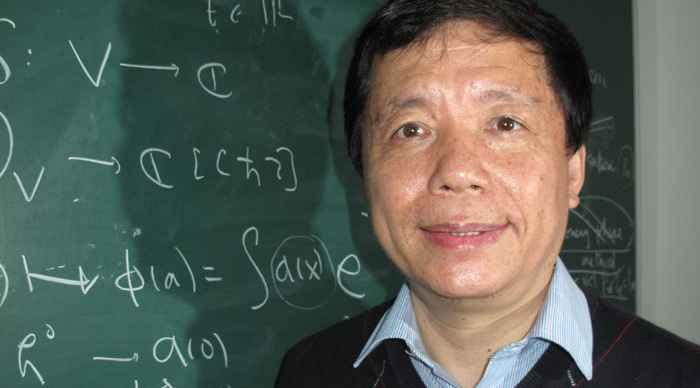A Dynamic Life──The Fluid World of Bringing Maths to Life

When your plane lands at Hong Kong’s Chek Lap Kok Airport, have you ever wondered why the process works so smoothly and effortlessly? Behind the physics and the engineering involved in a routine take-off or landing, there is always some precise underpinning mathematics. Professor Xin Zhouping, William M. W. Mong Professor of Mathematics at CUHK, is a researcher on what the abstract mathematical science can deliver to the ordinary folks on the street.
Each time he takes his seat on a plane, he’s obsessed with how it works, what the precise positioning of the nozzle means in terms of aerodynamics, even why the first-class seats are in the front and economy in the back. Professor Xin has devoted years of his life studying how the mysterious world of gas, water and waves works, helping to improve the function of the nose of a plane, how it helps the machine move efficiently, reducing the cost of the plane ticket.
Every time he’s on a boat, he studies why the waves move in the direction they do. His research helps understand how a boat moves through the water, how disasters can be prevented, even how tsunamis function and how to combat the massive destruction they can cause.
Professor Xin is the Associate Director of CUHK’s Institute of Mathematical Sciences, playing second fiddle to the director, the world-famous mathematician Professor Shing-tung Yau, in nurturing mathematical talent. Professor Xin’s fluid thinking led him in 2002 to be the first Hong Kong-based mathematician invited to address the International Congress of Mathematicians, a meeting of the best minds in mathematics that takes place once every four years.
After starting out in the highly abstract, and sometimes philosophical, world of pure mathematics, Professor Xin found himself called to a more practical use of his skills, in the world of what’s known as applied mathematics. The discipline helps span the gap between algebra and the real world—and that means Professor Xin feels he’s linking a mental discipline with some very immediate practicalities.
“Some people think you’re an artist, but magically it turns out what you are doing is useful for people,” Professor Xin says. “My field is like a bridge between pure mathematics and an engineer. I love mathematical problems that originate in the real world.”

“I enjoy doing it. It’s what I do every day,” Professor Xin says, noting his predilection for Navier-Stokes equations—complex mathematical formulas which can model fluid motions such as weather, ocean currents and air flows around an aircraft. They have a wide range of practical applications in the design of cars and aircrafts and analysis of pollution. Each time an engine bursts through the sound barrier when it is tested in a wind tunnel, like NASA’s famed jet-propulsion laboratory in Pasadena, it costs US$1 million. That’s an expensive way to find out how things work.
“I try to model these things, and write them down as an equation and solve it,” Professor Xin says. Even analyzing how you drink your daily coffee—particularly if you sip a latté through a straw—can be reduced to facts and figures, with enough work. “In real life it is very, very complicated to try to get a sensible mathematical equation to understand the behaviour of solutions.”
It’s in this way, though, that Professor Xin feels he’s helping bridge the world of numbers with the very real world. One of his papers has been cited 700 times in academic journals, demonstrating the impact and potentiality of his work from the alchemy of the chalk board to the many demands in the real world.
This article was originally published on CUHK Homepage in May 2013.

